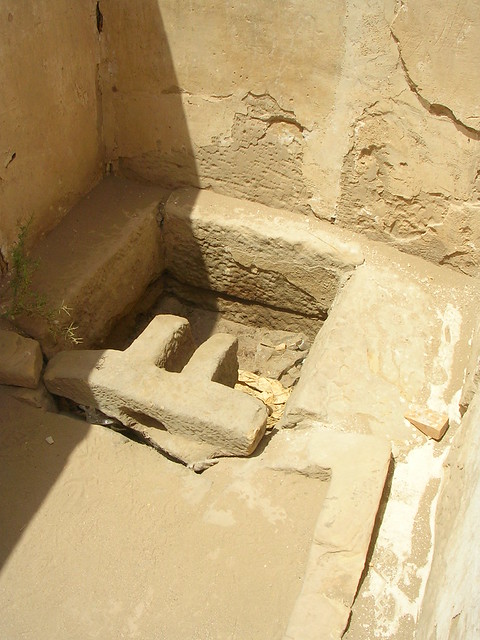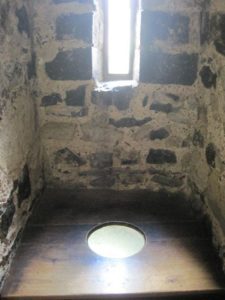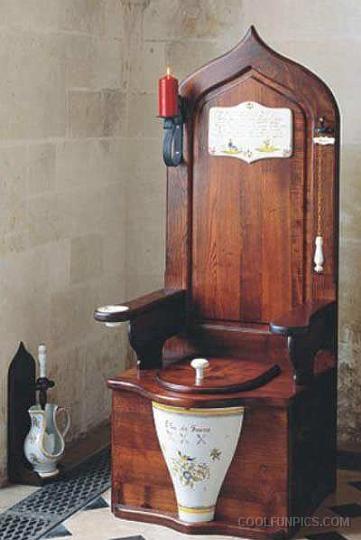 Imagine life without any modern conveniences. You’d probably wake up for work late every day since there’d be no alarm clock. Then you’d be running for miles and miles to make up for lost time – cars don’t exist. Oh, and good luck navigating there with no GPS. No phone means you can’t call in, and no computer means no email. At least you’ve got lunchtime to look forward to in order to regain some fuel (and some sanity) – now just try preparing and finishing a meal in 45 minutes with no microwave. We’ve only reached midday, and this is already shaping up to be a very difficult lifestyle.
Imagine life without any modern conveniences. You’d probably wake up for work late every day since there’d be no alarm clock. Then you’d be running for miles and miles to make up for lost time – cars don’t exist. Oh, and good luck navigating there with no GPS. No phone means you can’t call in, and no computer means no email. At least you’ve got lunchtime to look forward to in order to regain some fuel (and some sanity) – now just try preparing and finishing a meal in 45 minutes with no microwave. We’ve only reached midday, and this is already shaping up to be a very difficult lifestyle.
The past few centuries have brought upon some really useful inventions and innovations. Pretty crazy how essential these advances have become to our lives, huh? Yeah, we agree. With all of the progress we’ve made, one work of ingenuity goes overlooked more than everything we mentioned before. To say that life without cellphones or automobiles would be difficult is an understatement, but can you imagine living life without a toilet?
Believe it or not, there was a time before getting rid waste was as simple and easy as a flush.
Ancient Origins
 There is no definitive account of the creation of the first toilet – or of its creator for that matter. One of the earliest references to using any form of a commode is in The Holy Bible, where it quotes “And you shall have an implement among your equipment, and when you sit down outside, you shall dig with it and cover your refuse . . .” Prior to this method around 3,600 B.C., human beings are thought to have squatted when they had the urge to relieve themselves.
There is no definitive account of the creation of the first toilet – or of its creator for that matter. One of the earliest references to using any form of a commode is in The Holy Bible, where it quotes “And you shall have an implement among your equipment, and when you sit down outside, you shall dig with it and cover your refuse . . .” Prior to this method around 3,600 B.C., human beings are thought to have squatted when they had the urge to relieve themselves.
As civilizations began to cluster and form cities, the need for the disposal of human waste became imperative. The ancient Egyptians devised a solution around 2500 B.C., by developing a latrine system into bathrooms. A latrine is a toilet area, usually a public one with limited to no flushing capability. This limitation was addressed by the Egyptians’ system, however, and emptied into earthenware pipes after being flushed by hand with buckets of water.
The Greeks had a system of their own for eliminating waste, which they developed around 1700 B.C. There were large, earthenware pans, which were connected to a water supply that carried all waste away. This early take on the modern household toilet was constructed and used in Crete, the largest and most populous island in Greece. Other parts of Europe didn’t develop a system of comparable measure until the mid 16th century.
Historic Troubles
 For many years, European countries faced serious sanitation issues. The city of London was particularly afflicted. In 1189, the conditions were horrendous, and contaminating illnesses afflicted many citizens. Garderobes had been developed by this time, which were toilet banks that emptied waste into local waterways through pipes. The Thames River was a major outlet for the waste, and the odors and bacteria eventually caused widespread disease in the city. The London Health Board wrote a decree stating that all garderobes must be walled in, or at least 5 ½ feet from residences, but this made virtually no difference with regard to sanitary conditions.
For many years, European countries faced serious sanitation issues. The city of London was particularly afflicted. In 1189, the conditions were horrendous, and contaminating illnesses afflicted many citizens. Garderobes had been developed by this time, which were toilet banks that emptied waste into local waterways through pipes. The Thames River was a major outlet for the waste, and the odors and bacteria eventually caused widespread disease in the city. The London Health Board wrote a decree stating that all garderobes must be walled in, or at least 5 ½ feet from residences, but this made virtually no difference with regard to sanitary conditions.
Conditions persisted in this way until the year 1530, when the close stool was developed. Much more resembling of a modern toilet, the close stool was a chair with a hole cut into the middle of the seat. A pot made of porcelain or metal would be placed underneath to act as a receptacle for all waste. Nobles of that era were glad to have such a device, and could afford to have it built, cleaned, and maintained. Poor individuals continued to make use of streets, buckets, or tanks known as chamber pots. Though changes had been made, people still weren’t disposing of waste properly, and were literally tossing waste out into the street.
 Sir John Harrington designed the first toilet to eliminate the need for tossing waste manually, and was the first to conceptualize a flush feature. His godmother, Queen Elizabeth I, had the unique device installed in Richmond Palace in 1596. The design included a pull knob, which was used to empty water into the waste pot. The contents of the waste pot were then emptied into a receptacle, which had to be emptied routinely. Innovative as it was, the technology was only affordable to the royal family, and still did not address the issue of dealing with waste contents once they had been flushed.
Sir John Harrington designed the first toilet to eliminate the need for tossing waste manually, and was the first to conceptualize a flush feature. His godmother, Queen Elizabeth I, had the unique device installed in Richmond Palace in 1596. The design included a pull knob, which was used to empty water into the waste pot. The contents of the waste pot were then emptied into a receptacle, which had to be emptied routinely. Innovative as it was, the technology was only affordable to the royal family, and still did not address the issue of dealing with waste contents once they had been flushed.
The next major waste sanitation advancement had not been made until 1820, when public health reports stated that 1 in every 24 people that lived in “dirty parts” of England were dying from waste-related disease. By 1860, the people of Europe were fed up with the complications that arose because of the waste, which made way for the creation of the toilet, as we know it.
A Modern Marvel
 In 1861, Joseph Adamson addressed the needs of an entire continent, as well as those of civilizations for generations to come. With the help of Thomas Twyford and his ability to design the external structure of the toilet, Adamson was able to house his sanitation technology inside of a model that is similar to the toilets we use today. The design made use of features similar to the first flush toilet, but added the convenience of isolating waste odors, which had caused widespread illness for many years up to that point.
In 1861, Joseph Adamson addressed the needs of an entire continent, as well as those of civilizations for generations to come. With the help of Thomas Twyford and his ability to design the external structure of the toilet, Adamson was able to house his sanitation technology inside of a model that is similar to the toilets we use today. The design made use of features similar to the first flush toilet, but added the convenience of isolating waste odors, which had caused widespread illness for many years up to that point.
Though the toilet was making a splash overseas, here in the United States, outhouses were still the standard mean of “handling business.” An outhouse is a small building which contains a bench. The bench has several holes in which individuals would relieve themselves. With the end of World War I brought the popularity of the newly designed commode. Soldiers came home with stories about an invention that could flush waste away from restroom sites. The new “valveless water-waste preventer” did much to reduce sanitary illness, and many of those who suffered as a result of waste exposure were eventually made better due to improved conditions. Another benefit is that this technology was affordable to manufacture, so the common man could enjoy the luxury of an in-home, flushing toilet the same way someone of status or nobility could.
 Over time, innovations were made, and the toilet became a standard fixture in all homes. Now, we are even able to address restroom needs in areas with no plumbing, thanks to the creation of the porta potty! Design inspiration was taken from the design of the outhouse, and the original portable restrooms were created for use in shipyards for workers who did not wish to make lengthy treks in order to relieve themselves. A man named George Harding then patented the porta potty for the first time in 1962. Originally, porta potties were made of metal and wood, though the current models are constructed with polyurethane plastic, a material that offers both durability and mobility.
Over time, innovations were made, and the toilet became a standard fixture in all homes. Now, we are even able to address restroom needs in areas with no plumbing, thanks to the creation of the porta potty! Design inspiration was taken from the design of the outhouse, and the original portable restrooms were created for use in shipyards for workers who did not wish to make lengthy treks in order to relieve themselves. A man named George Harding then patented the porta potty for the first time in 1962. Originally, porta potties were made of metal and wood, though the current models are constructed with polyurethane plastic, a material that offers both durability and mobility.
All in all, the toilet has truly revolutionized our lives. Innovations have been made to the toilet, including the creation of the bidet, toilet seat covers, and even the development of the portable restroom, but not much has been added to the core formula that was written.